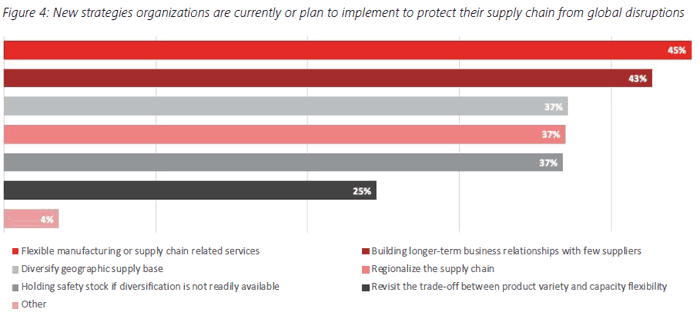Last week, I offered an initial review and comment on the recently released 2021 annual report from MHI. (See A Look at the 2021 MHI Annual Report.)
As part of that column, I noted that until 5-6 years ago, MHI - formerly the Material Handling Association of America, a trade organization for materials handling related vtendor of all kinds, from fork truck makers to robots to warehouse software and much more - produce an annual report that focused on the state of the equipment market.
Gilmore Says.... |
 |
| So as I was heading into the report I leave still uncertain of what "digitization" of the supply chain really means. My quest will continue. |
 |
What do you say? |
|
| Click here to send us your comments |
| |
|
|
|
Meaning the emphasis was on the market size and growth for all those types of equipment, individually and collectively, using in part a model for the very cyclical nature of material handling system sales.
But then, in an effort to extend MHI's sphere of influence to the broader supply chain, MHI partnered with the consultants at Deloitte to change the annual report dramatically, adopting a more a thought leadership/trend-focused approach.
There is a lot of good data and insight in the 2021 report, some of which I covered last week. But perhaps getting a bit ahead of myself, I was not wild about the entire theme of the report being around changes wrought by the pandemic, and the quest for supply chain resilience.
Why do I say that? First because with the pandemic soon it appears to be behind us, the COVID focus feel a little like yesterday's news. Second, I am frankly tired of the topic of resilience associated with the pandemic, in part because I believe the corporate focus on that will soon dissipate as it always does after a crisis subsides (see Fukushima-related disruption in 2011).
That off my chest, here are some additional data points and insight from the report worth noting.
The report states fairly early on that "In a world where localized, regional, and global disruptions seem ever more likely, taking proactive steps to improve supply chain resiliency is no longer optional."
I am going to agree and disagree. It certainly does appear, for reasons that are not clear, that there are more supply chain disruptions these days. And many companies should do more to prepare for those disruptions, such as more fully mapping their multi-level supply chains and developing disruption "playbooks," as just two of several examples.
But not all investments in resilience have, if you will, an ROI, and even if they do, for the CEO it can mean incurring expense in the current time, for a (possible) return in years down the road. Many prefer to let the next CEO to worry about it.
In a change of topic, the report notes this interesting data point on the topic of diversity in supply chain organizations. This year's survey found that only 15% of the supply chain workforce over 55 is female. That number jumps to a majority, at 56%, for workers age 18-24, so that should mean a big jump in women the supply chain workforce in coming years.
About half of the supply chain leaders surveyed (49%) said their organizations are increasing spending on supply chain innovations, Only 12% are decreasing their spending, and 39% report no change. My problem is the report says the increased spend on innovation was "spurred by the unprecedented disruptions from COVID-19."
The reality is innovation and digitization were the hot topics before the pandemic. I do not believe that COVID-19 is the prime reason spending on innovation is heading higher for many.
The report notes that "Although just-in-time manufacturing and distribution has proven its value, it has also shown significant vulnerabilities in a world of constantly evolving threat."
The implication is that a growing number of companies will at least partially (if that even makes sense to say) abandon Lean/JIT inventory strategies. There have in fact been a number of articles in major publications such as the Wall Street Journal suggesting companies are moving away from the Lean approaches now used for two to three decades.
Is it true? In the short-term probably Yes, as the severe supply shortages in many product areas happening right now means Lean/JIT has to be at least temporarily eschewed. However, I suspect that will not last long when normalcy returns.
That said, as seen in the chart below, 25% of respondents said they would increase safety stock for parts/components if they could not add new sources of supply.

Source: MHI
So as I was heading into the report I leave still uncertain of what "digitization" of the supply chain really means. My quest will continue.
The MHI 2021 report is worth a read. You can access it here: MHI 2021 Annual Report
What are your thoughts on the MHI 2021 report? Let us know your thoughts at the Feedback section below.
Your Comments/Feedback.
|